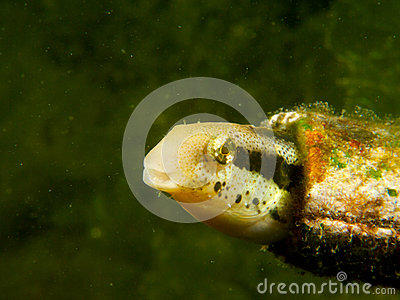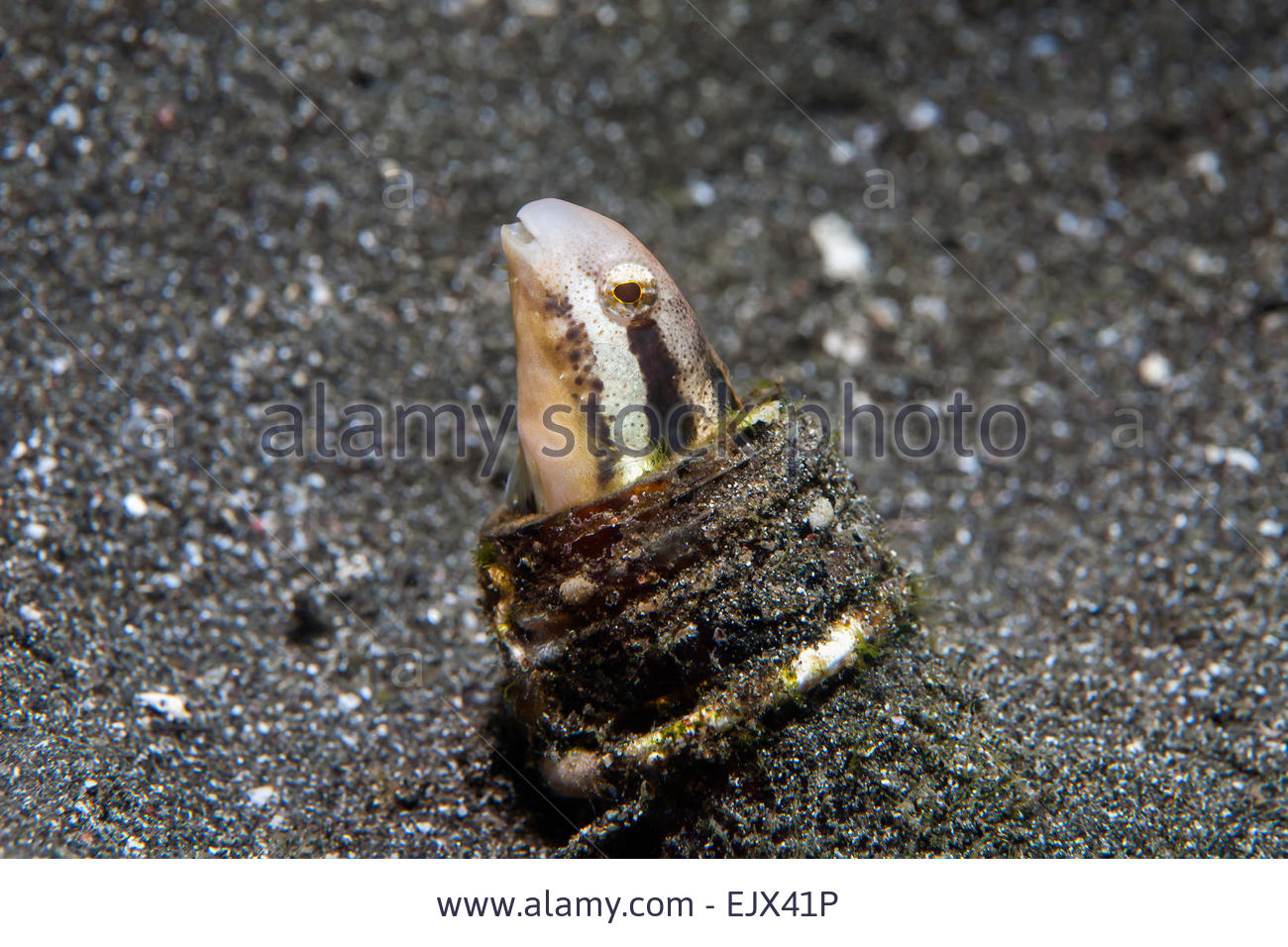
Meiacanthus grammistes
FAMILY
Blenniidae
TAXONOMY
Meiacanthus grammistes Valenciennes in Cuvier and Valenciennes,
1836, Java, Indonesia.
OTHER COMMON NAMES
English: Grammistes blenny; Japanese: Hige-nijiginpo.
PHYSICAL CHARACTERISTICS
May reach lengths of 3.5 in (90 mm). Has a toxin-producing
gland enclosed in the dentary at the base of each enlarged,
grooved lower-jaw fang. Body has alternating black and white
stripes. White stripes are yellowish anteriorly; black stripes
are narrow as they approach the base of the caudal fin, where
they break up into small black spots. Caudal fin is translucent,
with small black spots; dorsal and anal fins have a black submarginal
stripe.
DISTRIBUTION
Widely distributed throughout the western central Pacific
from the Ryukyu Islands in the north to the Great Barrier
Reef in the south and eastward to the Solomon Islands.
HABITAT
Usually found on or near coral reefs and may be seen
swimming above the reef; shelters in tubes or holes in the
reef.
BEHAVIOR
This is a venomous species that is able to inject venom using
modified fangs in the lower jaw. Unlike most blennies, these
fishes have a well-developed swim bladder that allows them
to swim easily above the reef. The combination of the swim
bladder and their ability to inject venom into a potential
predator allows them to swim without restriction above the
reef and to forage over a relatively wide area. Like most
species of Meiacanthus, the striped poison-fang blenny has
mimics. Two species are known to be Batesian mimics, a
blenniid (Petroscirtes breviceps) and a cardinalfish (Cheilodipterus
nigrotaeniatus). Both of these species swim with the striped poison-
fang blenny and avoid predation as a result of potential
predators’ aversion to the bite of the striped poison-fang
blenny.
FEEDING ECOLOGY AND DIET
Forages on small benthic invertebrates on or near the reef.
REPRODUCTIVE BIOLOGY
Unknown but probably similar to that of other blennies.
Among other blennies, the male displays to entice one or more
females to lay demersal eggs in a hole in the reef, and the male
probably guards the eggs until they hatch.
CONSERVATION STATUS
Not listed by the IUCN.
SIGNIFICANCE TO HUMANS
Sold as aquarium fish. Potential medicinal uses for
substances produced by the venom glands have not been explored.
Photo Gallery of - Striped poison-fang blenny





 Animalia Life
Animalia Life